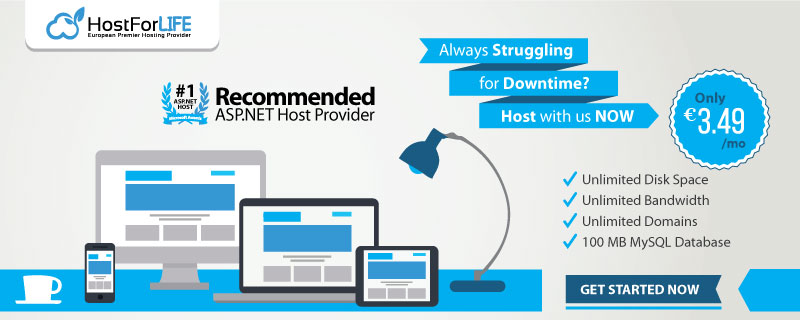Data is dispersed over several SQL Server instances in many firms; for instance, sales data may be on one server, HR data on another, and inventory data on a third.
If you have to manually export and combine all of the data into Excel or Power BI, analyzing such dispersed data can become a headache. That’s where Linked Servers in SQL Server come in handy.
By using Linked Servers, you can build a Centralized Reporting Database — a single SQL Server instance that can query multiple databases across servers in real time, without the need for constant data imports or duplication.
This guide will teach you:
- How to design a centralized reporting architecture
- How to configure Linked Servers step-by-step
- How to write cross-server queries
- Optimization and security tips
What Is a Centralized Reporting Database?
One SQL Server database that is used for centralized reporting is one that:
- uses linked servers to connect to several different databases.
- combines their data into materialized tables or views.
- gives dashboards, analytics, and BI tools a single reporting layer.
This architecture makes report production easier, preserves real-time consistency, and helps prevent duplication.
How Linked Servers Work?
A Linked Server allows one SQL Server instance to execute commands against another database — even if it’s running on a different machine or platform.
Once configured, you can:
- Run queries across servers using four-part naming convention
- Join remote and local tables seamlessly
- Fetch or aggregate data on-demand
Example
SELECT *
FROM [CentralDB].[dbo].[Sales]
INNER JOIN [LinkedServer1].[ERP].[dbo].[Customers]
ON Sales.CustomerID = Customers.CustomerID;
Step-by-Step: Setting Up a Linked Server
Step 1: Create a Linked Server
EXEC sp_addlinkedserver
@server = 'RemoteERP',
@srvproduct = '',
@provider = 'SQLNCLI',
@datasrc = '192.168.1.20'; -- remote SQL Server instance
Step 2: Add Login Mapping
EXEC sp_addlinkedsrvlogin
@rmtsrvname = 'RemoteERP',
@useself = 'false',
@locallogin = NULL,
@rmtuser = 'sa',
@rmtpassword = 'YourPassword';
Step 3: Test Connection
EXEC sp_testlinkedserver 'RemoteERP';
If the connection is successful, you’ll get a “Command(s) completed successfully” message.
Step 4: Query Remote Data
Now you can access tables on the remote server like this:
SELECT TOP 10 *
FROM [RemoteERP].[SalesDB].[dbo].[Orders];
Or even join with your local tables:
SELECT L.OrderID, L.TotalAmount, C.CustomerName
FROM [CentralDB].[dbo].[LocalOrders] AS L
INNER JOIN [RemoteERP].[SalesDB].[dbo].[Customers] AS C
ON L.CustomerID = C.CustomerID;
Step 5: Create a Centralized Reporting View
To make reporting easier, you can create views in your central database that aggregate remote data.
Example – A consolidated sales summary
CREATE VIEW vw_AllSales ASSELECT
S.OrderID,
S.SaleDate,
S.Amount,
'ERP Server' AS Source
FROM [RemoteERP].[SalesDB].[dbo].[Sales] AS S
UNION ALLSELECT
S.OrderID,
S.SaleDate,
S.Amount,
'CRM Server' AS Source
FROM [LinkedCRM].[CRMDB].[dbo].[Sales] AS S;
Now your reporting tools (like Power BI or SSRS) can query vw_AllSales directly — pulling unified sales data from multiple servers in real time.
Step 6: Automate Data Refresh or ETL (Optional)
If you want to materialize data locally for faster reporting (instead of real-time queries), you can use SQL Agent Jobs to schedule nightly imports:
INSERT INTO [CentralDB].[dbo].[SalesArchive]
SELECT * FROM [RemoteERP].[SalesDB].[dbo].[Sales]
WHERE SaleDate >= DATEADD(DAY, -1, GETDATE());
You can then use this staging table for reports, ensuring performance and reliability even when remote servers are busy.
Optimization Tips
| Tip | Description |
| Filter at the remote server |
Use OPENQUERY() to run remote filtering before data transfer. |
| Index local staging tables |
For large data sets, index staging tables used for reporting. |
| Use incremental loads |
Don’t pull entire tables — only sync new or updated data. |
| Use materialized views |
If supported, create pre-computed summary tables for faster BI. |
Example Using OPENQUERY (Better Performance)
SELECT *
FROM OPENQUERY(RemoteERP, 'SELECT CustomerID, SUM(Total) AS Sales FROM Sales GROUP BY CustomerID');
This executes the aggregation on the remote server before returning results — much faster for large datasets.
Security Best Practices
Use dedicated SQL logins for linked servers with read-only permissions.
Never store credentials in plain text — use SQL Authentication mapping.
Limit Data Access and RPC options unless needed:
EXEC sp_serveroption 'RemoteERP', 'rpc out', 'false';
EXEC sp_serveroption 'RemoteERP', 'data access', 'true';
Audit and monitor Linked Server connections via:
SELECT * FROM sys.servers;
Real-World Architecture Example
+-----------------------+
| SQL Server Central | --> Linked Server Views (vw_AllSales, vw_AllCustomers)
| Reporting Database |
+-----------------------+
| |
| +----> RemoteERP (Sales, Billing)
|
+--------------> RemoteCRM (Leads, Customers)
|
+--------------> RemoteHR (Employees, Attendance)
Your BI tools (e.g., Power BI, Tableau, SSRS) connect only to the Central Reporting DB, which unifies all data sources dynamically.
Troubleshooting Common Linked Server Issues
| Error Message | Cause | Fix |
| “Cannot initialize data source object” |
Permissions or provider issue |
Grant file access / install provider |
| “Login failed for user” |
Wrong credentials |
Check sp_addlinkedsrvlogin |
| “Query timeout expired” |
Slow network or huge query |
Use filters or schedule ETL jobs |
| “RPC Out not enabled” |
Cross-server procedure call blocked |
Run EXEC sp_serveroption 'Server', 'rpc out', 'true'; |
Conclusion
A Centralized Reporting Database powered by Linked Servers offers a powerful way to:
- Unify data from multiple systems
- Simplify reporting and analytics
- Reduce manual data consolidation
- Enable near real-time business insights
By combining Linked Servers, scheduled ETL processes, and reporting views, you can build a scalable, secure, and efficient data architecture for your organization — without requiring a full data warehouse immediately.
HostForLIFE.eu SQL Server 2022 Hosting
HostForLIFE.eu is European Windows Hosting Provider which focuses on Windows Platform only. We deliver on-demand hosting solutions including Shared hosting, Reseller Hosting, Cloud Hosting, Dedicated Servers, and IT as a Service for companies of all sizes.
